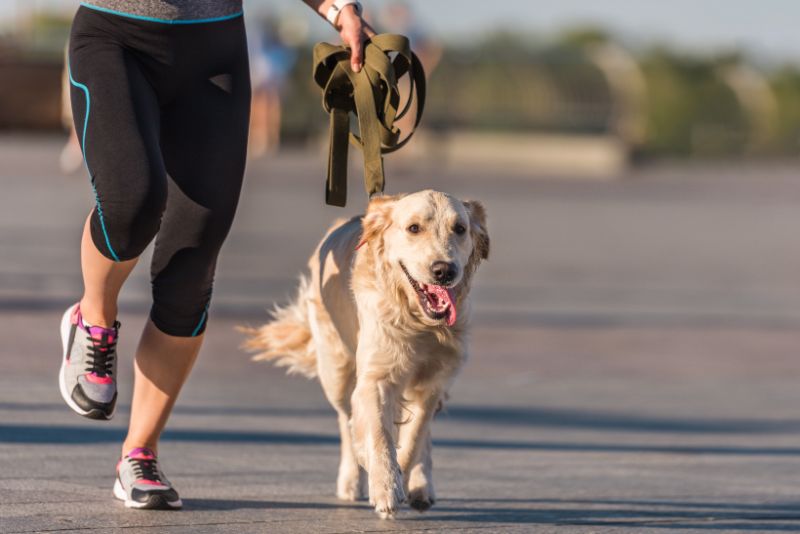
Have you been thinking of getting more exercise? Any time of year is a great time to embark on an exercise regime. And with over 50% of pets in the United States overweight or obese, why not take the opportunity to bring your pet along with you?
Exercising with your pet can be lots of fun, but there are a few do’s and don’ts to be aware of. With some basic preparation and a little awareness, you can make exercising fun for your pet and improve his health and longevity.
Exercising With Your Pet
Do check with your veterinarian – Before starting any exercise routine, it’s important to make sure your pet is healthy enough for more activity. Schedule an appointment to discuss your pet’s overall general health and any special needs.
Don’t ignore your pet’s breed and age – Older pets may need more time to acclimate to exercise, and need shorter workouts. And certain breeds may not be cut out for long distance running. Long bodied dogs with short legs might be more inclined to like a walk or some playtime. Take your pet’s interests and personality into account when deciding on an exercise program.
Do start slowly – Too much too soon can cause injury for your pet. Begin with short distances and short times, and work your way up to longer workouts. Pay attention to any soreness or discomfort and tailor your workouts accordingly.
Don’t forget the water – Fresh water is very important to have on hand at all times, especially when exercising with your pet. You can have him tote his own, or carry it with you. Offer it often, and let your pet have water breaks more frequently if the weather is warm.
Do be aware of the paws – As the weather warms, be aware of hot pavement on your dog’s paws. These sensitive areas can burn easily. Place your palm flat on the surface you’ll be walking or running on – if it’s too hot for you, it’s too hot for your dog. When returning home, check your dog’s paws for any cuts or abrasions.
Don’t ignore signs of stress – Exercising with your pet in hot weather can put her at risk for heat stroke. Dogs are more susceptible, but cats can overheat as well. Plan your exercise at the cooler end of the day – early morning and evening – to minimize the chances of heat stress. Let your dog have lots of breaks and be aware of the signs that you need to stop.
Do mix it up – There are so many fun options for exercising with your pet that it’s easy to mix up the workout routine. From feather wand play with your cat, to fetch at the park, to running with your dog, to hiking, to agility work, take some time to add variety (slowly) and make exercising fun for both you and your pet!
Signs of A Problem
It’s important not to let your pet overexert herself, especially in warm weather. Heat stroke can occur when the body cannot cool itself down, and can result in organ failure and death.
Signs of heat stroke include:
- Excessive panting
- Drooling
- Abnormally red gums and tongue color
- Trying to lie down, stop, or seek shade
- Rapid or irregular heart rate
- Weakness
- Collapse
If your pet is exhibiting any of these signs, stop her exercise and take her to the nearest veterinary hospital right away. Heat stroke is a medical emergency that requires veterinary intervention to save your pet.
If you have any questions about exercising with your pet, please give your team at True Care Veterinary Hospital a call. And keep up the great work!

